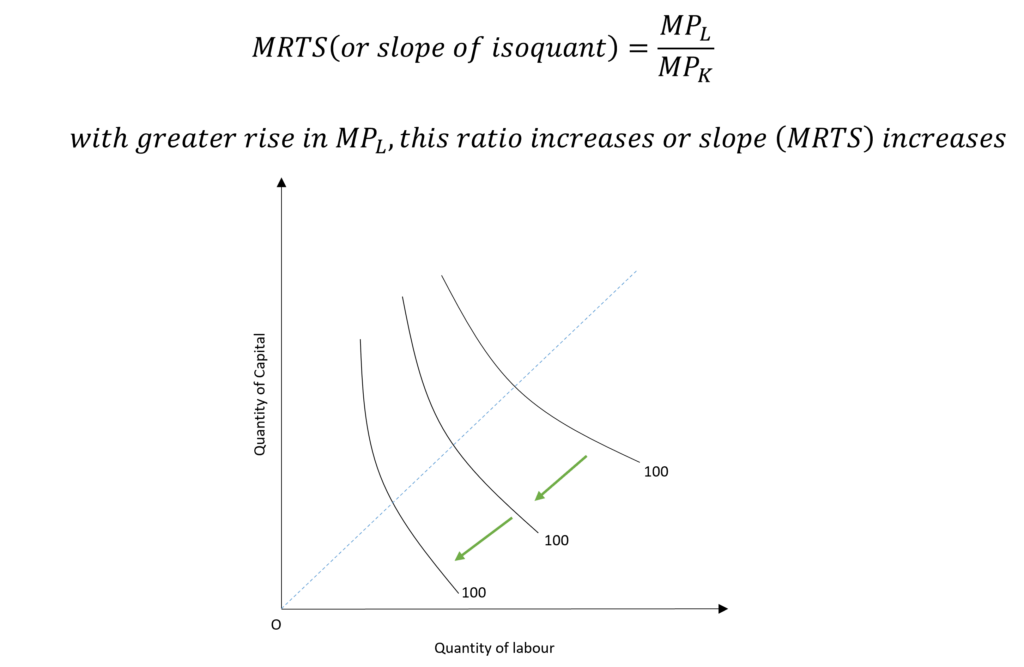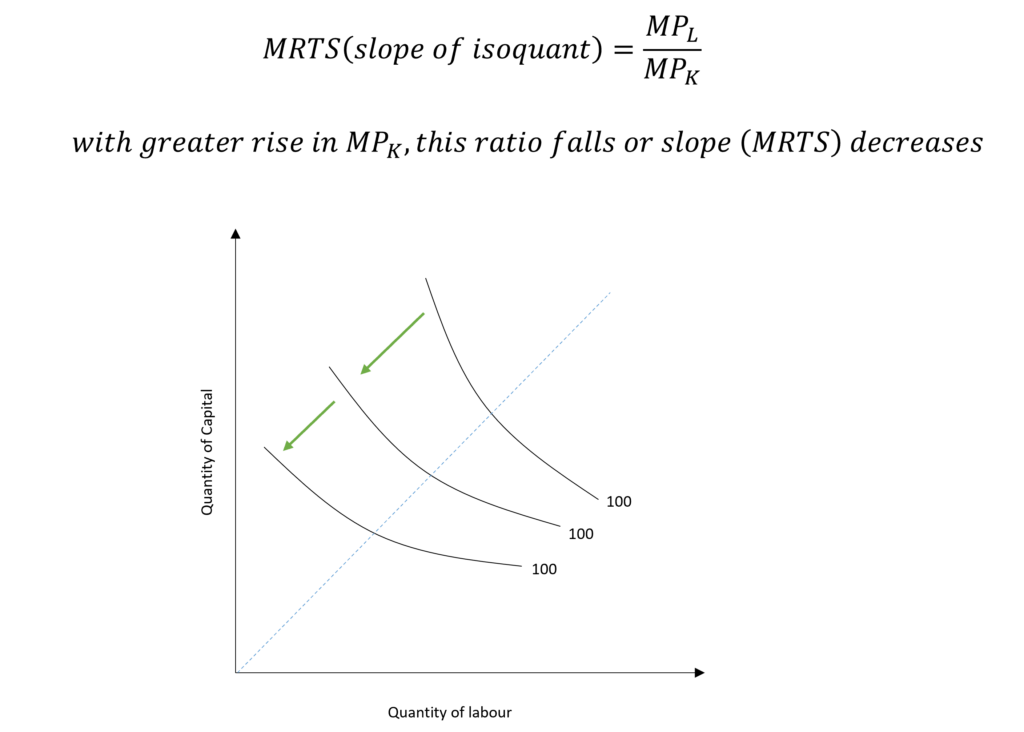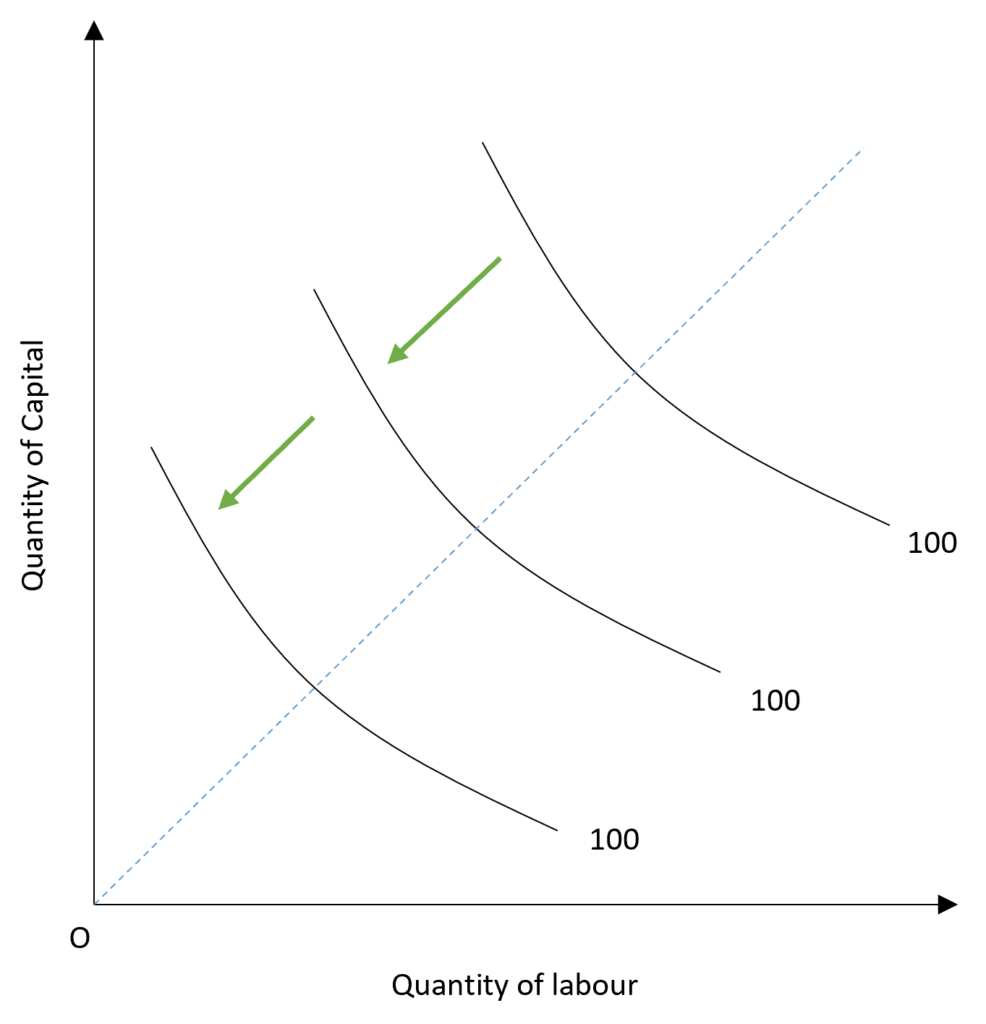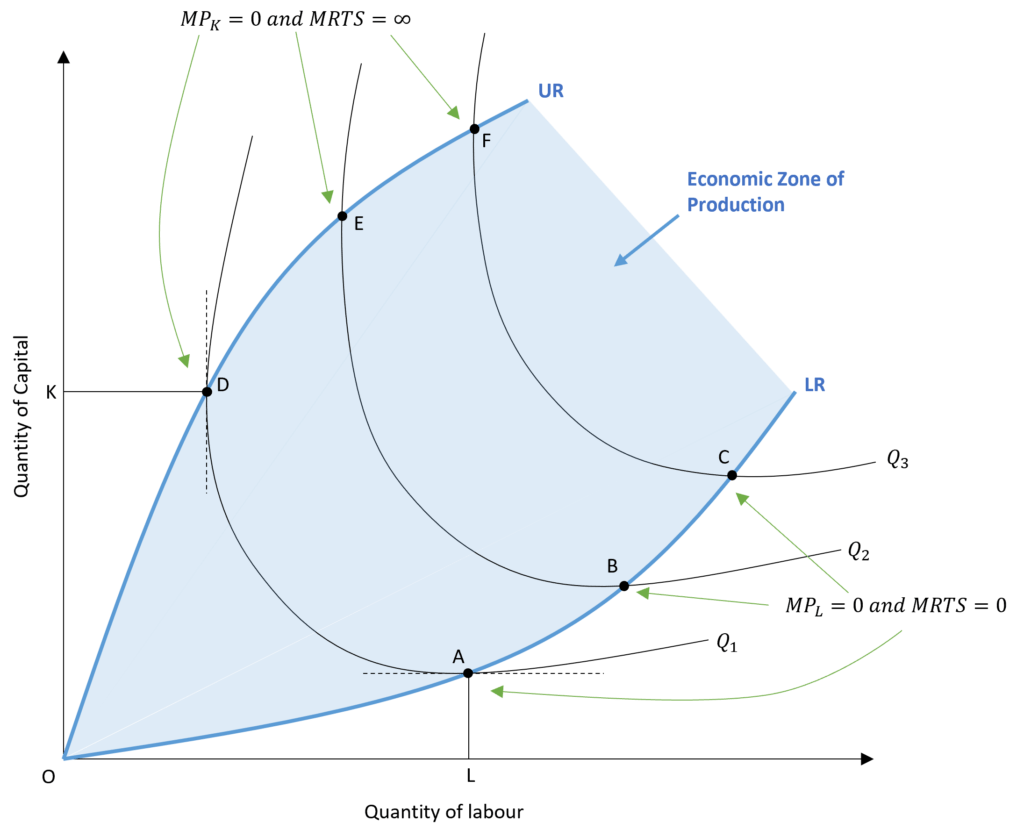All factors of production are variable in the long run. Moreover, technology does not remain constant in the long run. Research, development and technical progress in production can have a huge impact in the long run. For instance, the invention of the printing press revolutionised the printing industry and enabled printers to expand their output considerably.
With improvements in technology, the same level of output can be produced with fewer inputs. Similarly, the same level of inputs can produce more output with better technology. Keeping the output constant, the isoquants shift to the left with technical progress because less quantity of labour and capital is required to produce the same output.
However, technical progress can be of different types depending on its effects on productivity or marginal product of inputs. Here, we will discuss the three types of technical progress. The use of Isoquants, MRTS and their relationship with Marginal Productivity (MPL and MPK) is essential in this analysis. To learn more about these concepts, go here.
This website contains affiliate links. When you make a purchase through these links, we may earn a commission at no additional cost to you.
Econometrics Tutorials
Labour deepening technical progress
With labour deepening technical progress, the marginal product of labour (MPL) will increase more than that of capital (MPK). Since the marginal product of labour increases more, the slope of isoquants (MRTS) will increase.

Therefore, the isoquant will shift to the left. This is because fewer inputs are required to produce the same output of 100 units. Additionally, the isoquant will become steeper as its slope (MRTS) increases. This also means that in order to substitute labour for capital, less quantity of extra labour will be needed to maintain constant output. This is the result of the marginal product of labour (MPL) increasing more than that of capital (MPK) due to technical progress.
Capital deepening technical progress
Capital deepening progress will lead to an increase in the marginal product of capital or MPK that is higher than the increase in MPL. With a rise in MPK more than MPL, the slope of isoquant or the MRTS will decrease.

In this case, the isoquant will become less steep or its slope will decrease. In addition to this, a leftward shift in isoquant is observed with output remaining constant. To substitute labour for capital, a higher quantity of labour will be required to keep the output constant because the marginal product of capital has increased more after technical progress.
neutral technical progress
Technical progress is neutral if the increase in marginal products of inputs is the same. That is, the marginal product of both labour and capital will increase in the same amount. In this case, the slope or MRTS remains the same. The isoquant shifts to the left because less labour and capital are needed to produce the same level of output.

ridge lines and economic zone of production
With the operation of diminishing marginal returns, the marginal product of a factor will eventually fall to zero if the producer goes on increasing that factor without changing the other inputs. As a result, the isoquants start to bend in the opposite direction if more of that factor is employed. This happens beyond the point where the marginal product falls to zero.
Ridge lines are the locus of all the points on different isoquants (isoquant map) where the marginal product of a factor is zero.

In the diagram, the lower ridge line LR shows all the points where MPL is zero. The upper ridge line UR is a locus of all points with zero MPK on every isoquant. Beyond these ridge lines, the isoquants are bending in the opposite directions. This happens because additional use of these factors does not contribute to the output. The output can only be kept constant by increasing both factors.
For example, if a producer employs more labour than ‘L’ on isoquant Q1, the output can only be kept constant by increasing capital along with labour because the marginal product of extra labour after L will be negative. Thus, isoquant will start rising upward with the use of more capital to maintain Q1.
Economic Zone of Production
The points A, B and C on isoquants have zero marginal product of labour (MPL = 0). The lower ridge line passes through all these points. The MRTS or slope of isoquants is also zero on these points as the tangents are parallel to the x-axis. Beyond this, the isoquants have a positive slope as they start to rise upwards. Similarly, all the points on the upper ridge line shown by D, E and F on isoquants have zero marginal product of capital. The MRTS is infinity at these points because the tangents are parallel to the y-axis. Isoquants have a positive slope if more capital is used as the isoquants bend in the opposite direction.
Instead of employing more inputs beyond these points, it is better to increase the scale of production. Or, producers can get higher output with the same level of inputs as a result of inventions and technical progress.
With the marginal product of any factor falling to zero, producers will not employ more of that input because it stops contributing to the total output. As a result, producers will choose to operate between ridge lines (LR and UR), where, the marginal product of both factors is positive. This is known as the economic zone of production and is shown by the shaded area in the diagram.
Econometrics Tutorials


